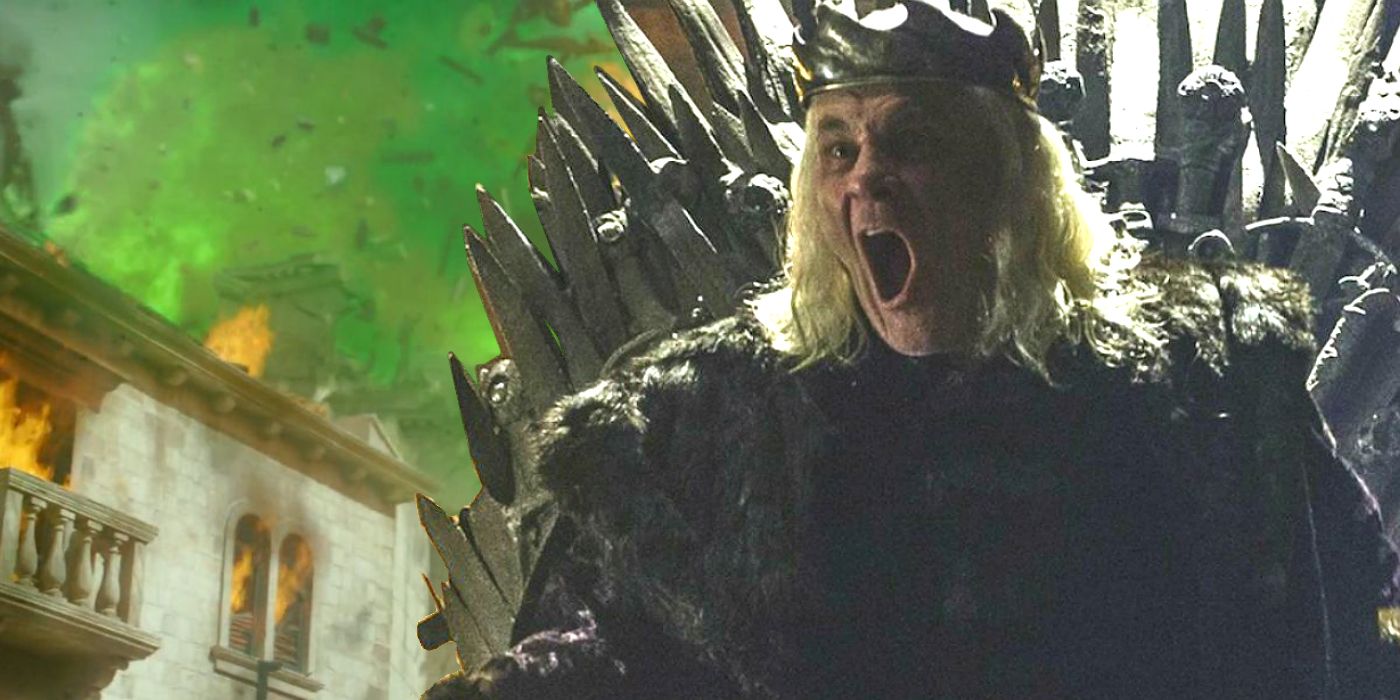Literary Portrayals of the Mad King

The mad king got – The Mad King is a literary archetype that has been explored in numerous works of literature, from Shakespeare’s “King Lear” to George R.R. Martin’s “A Song of Ice and Fire.” These portrayals offer insights into the psychological and social implications of madness, as well as the dangers of unchecked power.
King Lear vs. Aerys Targaryen
In Shakespeare’s “King Lear,” the titular character is a proud and aging king who descends into madness after dividing his kingdom among his three daughters. His madness is characterized by paranoia, delusions of grandeur, and a complete loss of reason. In contrast, George R.R. Martin’s Aerys Targaryen, the Mad King from “A Song of Ice and Fire,” is a cruel and sadistic tyrant who is driven mad by a combination of incest and the stress of ruling. His madness manifests itself in fits of rage, delusions of persecution, and a morbid fascination with fire.
Despite their differences, both King Lear and Aerys Targaryen share some common traits. Both are powerful men who are driven to madness by their own flaws. Both are also surrounded by sycophants and flatterers who encourage their delusions. Ultimately, both kings are destroyed by their own madness, leaving their kingdoms in chaos.
Psychological and Social Implications
The Mad King archetype explores the psychological and social implications of madness. In literature, madness is often seen as a metaphor for the dangers of unchecked power. When a king becomes mad, he is no longer able to rule effectively, and his kingdom falls into chaos. This is a cautionary tale about the importance of keeping power in check.
Madness can also be seen as a metaphor for the fragility of the human mind. Even the most powerful and seemingly sane individuals can be driven to madness by stress, trauma, or other factors. This is a reminder that we are all susceptible to mental illness, and that it is important to seek help if we are struggling with our mental health.
Cultural Impact of the Mad King: The Mad King Got

The Mad King figure has had a profound impact on popular culture, becoming a ubiquitous symbol of power, madness, and chaos. From Shakespeare’s King Lear to the Joker in Batman, the Mad King has captivated audiences with his unhinged behavior and disregard for societal norms.
In Film and Television, The mad king got
The Mad King has been a popular character in film and television for decades. Some notable portrayals include:
- Klaus Kinski as Nosferatu in Werner Herzog’s 1979 film Nosferatu the Vampyre
- Malcolm McDowell as Emperor Caligula in Tinto Brass’s 1979 film Caligula
- Jack Nicholson as Jack Torrance in Stanley Kubrick’s 1980 film The Shining
- Heath Ledger as the Joker in Christopher Nolan’s 2008 film The Dark Knight
These portrayals have explored the different facets of the Mad King character, from his tyrannical rule to his descent into madness.
Symbolism and Relevance
The Mad King has become a powerful symbol in contemporary society. He represents the dangers of unchecked power, the fragility of sanity, and the chaos that can result from unchecked ambition. His enduring fascination reflects our own fears of losing control and succumbing to the darkness within.
The Mad King got deposed, but the echoes of his madness still haunt the realm. For those who wish to witness the unfolding drama, what time does Game of Thrones come on tonight ? Tune in and prepare to be consumed by the madness once again.
In the annals of Westeros, the Mad King Aerys Targaryen remains a haunting specter, his reign marked by madness and bloodshed. Among his victims was the young Lucerys Velaryon, a skilled dragonrider whose untimely demise lucerys velaryon sent shockwaves through the realm.
Yet, even in his darkest moments, Aerys’s actions were but a reflection of the fractured and chaotic world that surrounded him, a testament to the fragility of power and the horrors it can unleash.
In the annals of Westeros, the reign of the Mad King Aerys Targaryen is a tale of madness and bloodshed. His tyranny extended far and wide, leaving a trail of destruction in its wake. Yet, amidst the chaos, there emerged a young prince named Lucerys Velaryon , whose courage and resilience defied the madness that surrounded him.
As the Mad King’s reign spiraled into its inevitable end, Lucerys’s actions became a beacon of hope in the darkness, proving that even in the face of tyranny, the human spirit could prevail.
The Mad King got the taste of a tyrant from the potion given by Tyene Sand. Her father, Oberyn Martell, was a skilled fighter who taught her how to use poison. Tyene used her knowledge to create a potion that would drive the Mad King insane.
The potion worked, and the Mad King became even more paranoid and cruel than he had been before. He eventually ordered the deaths of his own family members, and he was eventually killed by Jaime Lannister.
The Mad King’s reign was a dark time for Westeros, and his madness spread like wildfire through the realm. Even the loyalists found themselves questioning their allegiance, as the king’s cruelty and paranoia grew unchecked. As the Seven Kingdoms descended into chaos, a new threat emerged from the deserts of Dorne: the Sand Snakes , illegitimate daughters of Prince Oberyn Martell.
These skilled warriors sought revenge for their father’s death at the hands of the Mad King, and their arrival only served to further destabilize the realm.